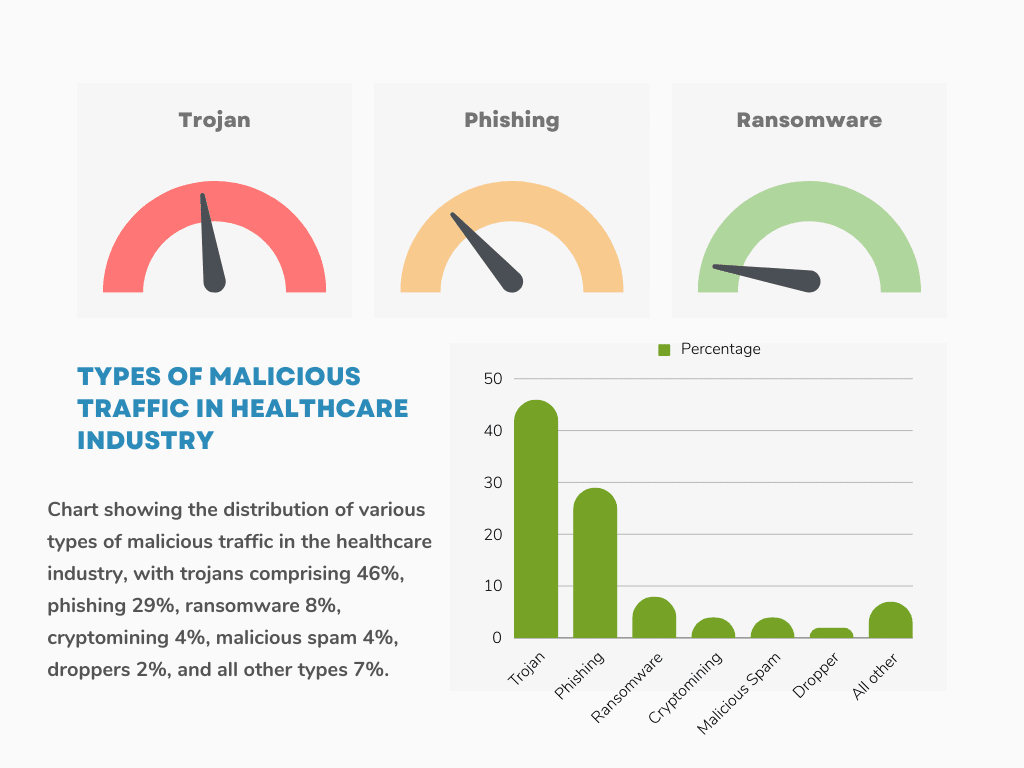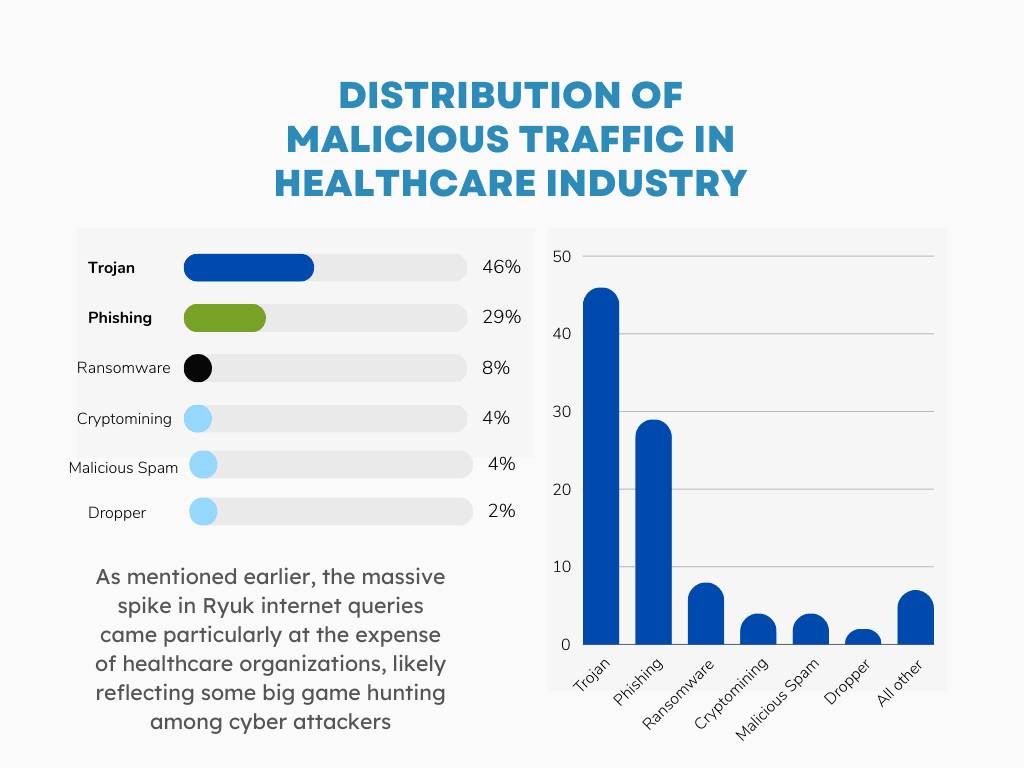As the digital world continues to evolve cybercriminals are also adapting their tactics. In the healthcare industry, where patient data’s highly sensitive it is crucial to understand and address cybersecurity threats.
Recent insights, into trends in cybersecurity threats highlight patterns and challenges faced by healthcare organizations providing information on areas that require increased vigilance and proactive measures.
Upon studying the statistics from the Cyber Security Threat Trends report by Cisco Umbrella, available at https://learn-cloudsecurity.cisco.com/umbrella-library/2021-cyber-security-threat-trends-phishing-crypto-top-the-list, several significant findings emerge, offering valuable insights into the cybersecurity landscape within the healthcare industry.
Trojan Activity Dominance

One significant finding is the prevalence of trojan activity within the healthcare sector. Unlike industries where trojan attacks are less frequent trojans pose a major threat in healthcare accounting for a substantial 46% of malicious traffic.
This statistic emphasizes how threat actors persistently exploit vulnerabilities within healthcare systems potentially leading to data breaches, compromised systems and disruptions in operations.
Phishing Persistence
Following closely behind trojan activity are phishing attacks, which account for 29% of traffic.
The enduring prominence of phishing highlights the effectiveness of social engineering techniques used to manipulate users and gain access, to sensitive information.
To mitigate the risks posed by phishing attempts healthcare organizations should prioritize email security measures, user awareness training programs and multi factor authentication protocols.
Ransomware Resurgence

Although ransomware is not as common, as trojans and phishing it still poses a threat.
Ransomware ranks slightly lower in prevalence compared to trojans and phishing. To be exact, 8% of all malicious traffic attacks comprise of ransomware attacks but its impact remains significant.
What worries experts is that healthcare organizations are particularly susceptible to attacks lagging behind sectors in terms of protection, against such threats.
The emergence of high-profile ransomware strains such as Ryuk underscores the need for robust cybersecurity defences and incident response protocols within the healthcare industry.
Crypto Mining Concerns
Even though crypto mining threats only account for 4% of traffic they should still be taken seriously because they can have a significant impact, on system performance and resource usage.
Healthcare organizations must remain vigilant against crypto mining malware, which can clandestinely exploit computing resources to mine cryptocurrency, leading to diminished system performance and increased operational costs.
Mitigation Strategies
In light of these insights, healthcare organizations must adopt a proactive and multi-layered approach to cybersecurity to effectively mitigate emerging threats. This includes:
- Incorporating measures to detect and counter malware and phishing attempts, in real time is crucial for an effective cybersecurity system.
- It is also important to provide cybersecurity training to employees enabling them to identify and report any activities, especially those related to phishing.
- Regularly updating and patching software and systems is another step in minimizing the risk of exploitation by threat actors.
- Employing encryption protocols ensures the protection of data both when stored and when transmitted reducing the chances of unauthorized access in case of a breach.
- Developing and regularly testing incident response plans is also vital for an coordinated reaction to cybersecurity incidents like attacks or data breaches.
By adopting an approach to cybersecurity and using insights from threat intelligence reports healthcare organizations can strengthen their defences against evolving cyber threats.
This helps safeguard data while preserving the integrity of systems and infrastructure. In todays world where cybersecurity riskers significant taking measures becomes imperative for ensuring resilience and uninterrupted healthcare services.
To summarize analysing trends, in cybersecurity threats emphasizes the need for healthcare organizations to remain alert and adaptable as cyber threats continue to evolve.
By giving importance to investments, in cybersecurity promoting a culture of awareness and readiness and working together with industry partners healthcare stakeholders can join forces to reduce risks and maintain the trust and reliability of healthcare systems globally.